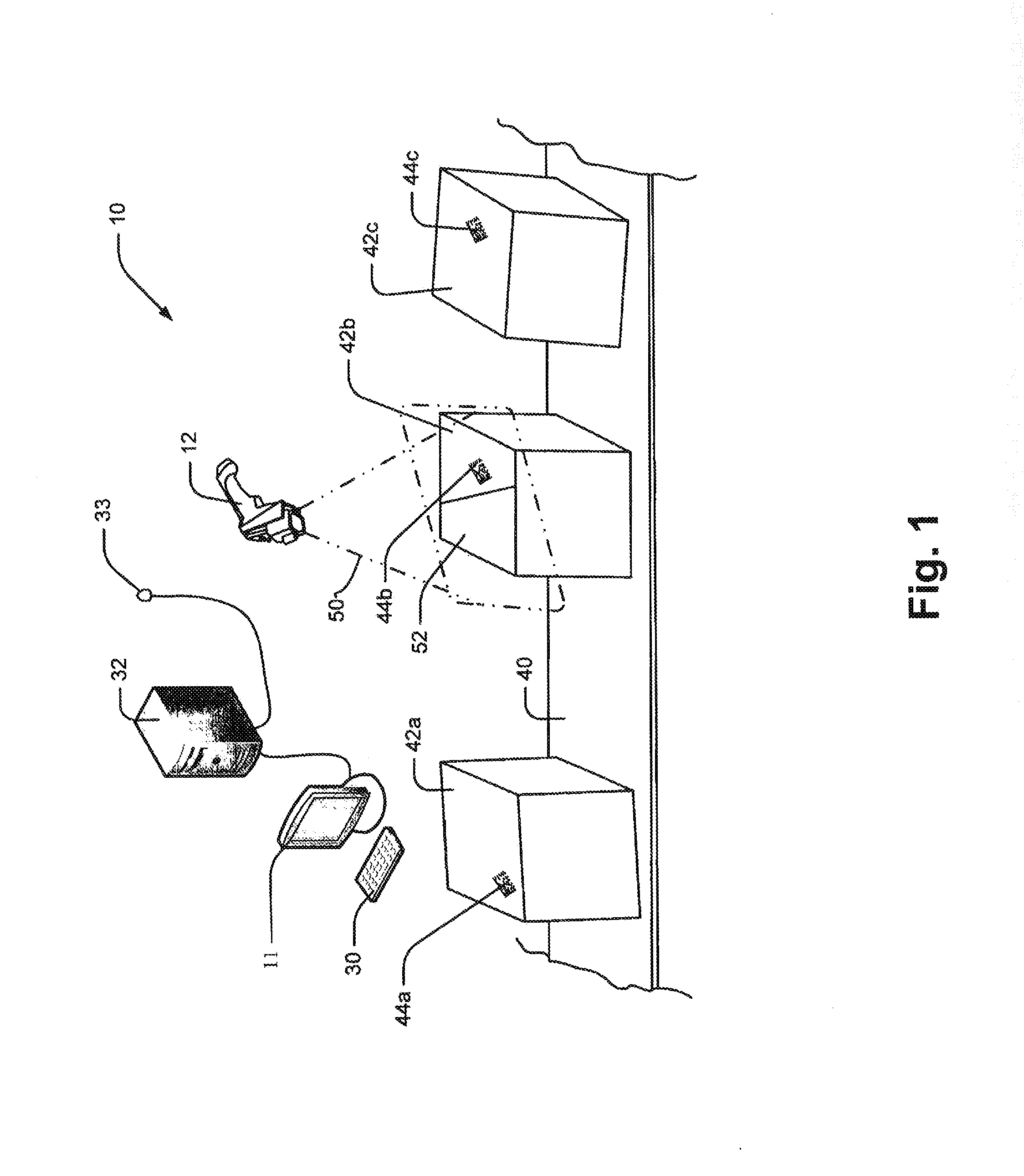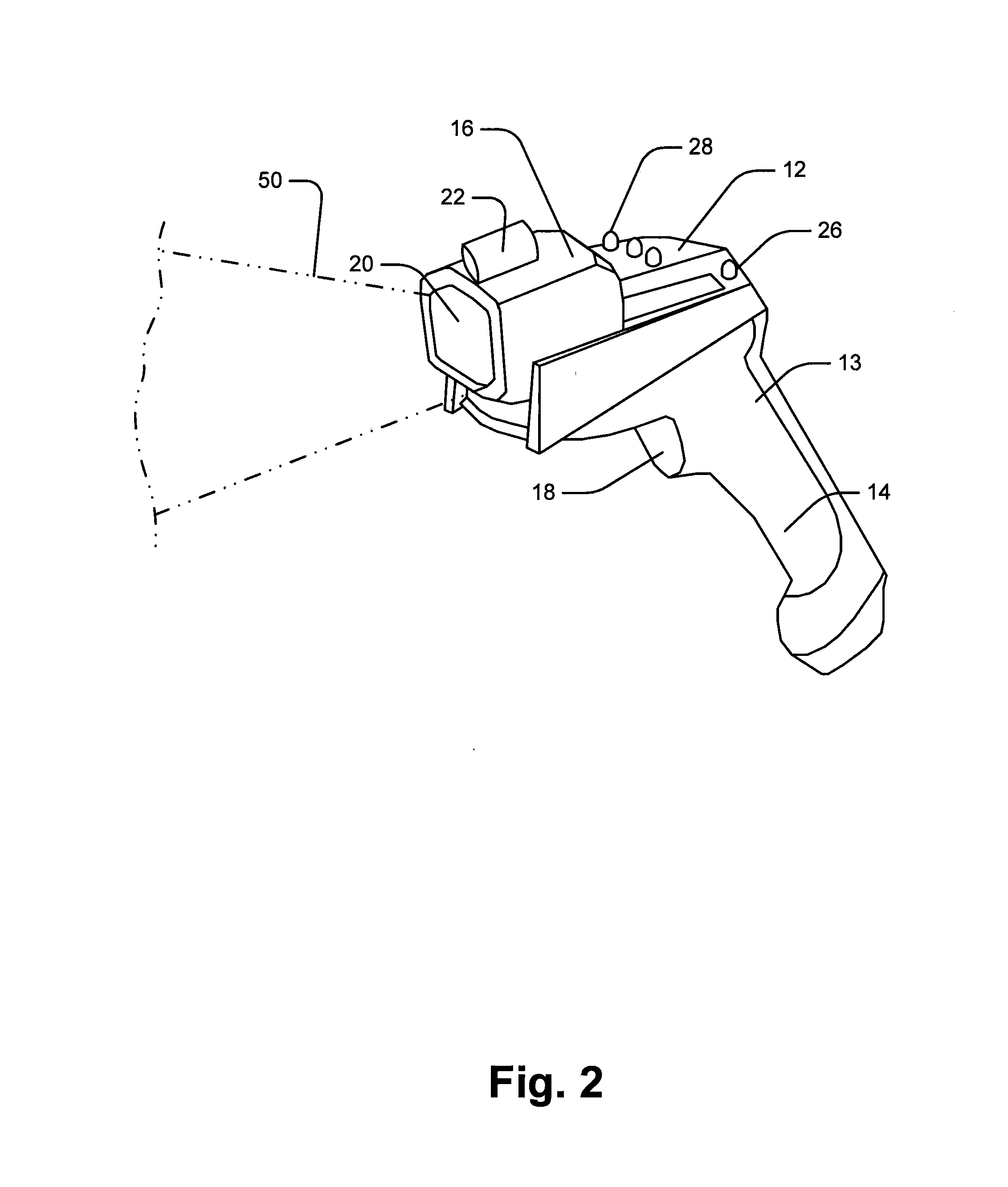Handheld Apparatus For Quantifying Component Features
a technology of component features and handheld devices, applied in the field of handheld devices, can solve the problems of difficult to precisely align handheld devices with features, inaccurate thickness measurement, and burden on the additional time required for precise manual alignment of handheld devices with objects to obtain each dimension, and achieve the effect of precise measurement of the distance between the sensor
- Summary
- Abstract
- Description
- Claims
- Application Information
AI Technical Summary
Benefits of technology
Problems solved by technology
Method used
Image
Examples
Embodiment Construction
[0035]Referring now to the drawings wherein like reference numerals corresponding to similar elements throughout the several views and, more specifically referring to FIG. 1, the present invention will be described in the context of an exemplary materials handling assembly 10 that includes a transfer line 40 for moving cubic objects such as boxes or the like 42a, 42b, and 42c through a work station. Each of the objects is marked with a machine readable code (e.g., a bar code, a two-dimensional matrix code, etc.) where the codes are identified in FIG. 1 by numerals 44a, 44b and 44c that are applied to at least one of the surfaces of the object. In FIG. 1, code 44b is applied to exemplary surface 52 of object 42b. As objects 42a, 42b, 42c, etc., are moved to the station, equipment at the station is used to read the codes on the objects to identify the objects. In addition, station equipment is used to image objects and determine object dimensions. Where the objects needs to be loaded ...
PUM
 Login to View More
Login to View More Abstract
Description
Claims
Application Information
 Login to View More
Login to View More - R&D
- Intellectual Property
- Life Sciences
- Materials
- Tech Scout
- Unparalleled Data Quality
- Higher Quality Content
- 60% Fewer Hallucinations
Browse by: Latest US Patents, China's latest patents, Technical Efficacy Thesaurus, Application Domain, Technology Topic, Popular Technical Reports.
© 2025 PatSnap. All rights reserved.Legal|Privacy policy|Modern Slavery Act Transparency Statement|Sitemap|About US| Contact US: help@patsnap.com



